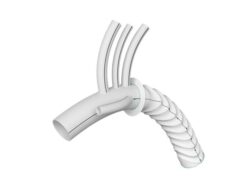 The Centers for Medicare & Medicaid Services (CMS) are exploring strategies to enhance the Quality Payment Program (QPP), underscoring an effort to boost healthcare quality and efficiency. Launched on Jan. 1, 2017, the QPP was designed to inspire clinicians to deliver superior, patient-centered care while mitigating payments for those who fail to meet performance standards.
The Centers for Medicare & Medicaid Services (CMS) are exploring strategies to enhance the Quality Payment Program (QPP), underscoring an effort to boost healthcare quality and efficiency. Launched on Jan. 1, 2017, the QPP was designed to inspire clinicians to deliver superior, patient-centered care while mitigating payments for those who fail to meet performance standards.
Within the QPP framework, there are two primary payment tracks: the Merit-based Incentive Payment System (MIPS) and Alternative Payment Models (APMs).
While MIPS assesses clinicians across various categories, APMs offer customized payment structures aimed at incentivizing high-quality care. MIPS encompasses three reporting tracks, with traditional MIPS requiring clinicians to select quality measures and improvement activities for reporting, alongside complete promoting interoperability measures and cost performance data. Conversely, the Alternative Payment Model Performance Pathway (APP) simplifies reporting and scoring for MIPS APM participants. Additionally, MIPS Value Pathways (MVPs) zero in on specific specialties or medical conditions, offering a more comprehensive evaluation of care quality.
The Executive Board of CMS gave the green light to two MVP applications focusing on improving care for patients with symptomatic extracranial carotid artery disease and asymptomatic abdominal aortic aneurysms. Submitted to CMS on March 20, these applications await review, with CMS poised to seek public feedback before potentially incorporating them into the 2026 Proposed Rule.
CMS officials emphasize the potential of MVPs to refine the QPP, providing clinicians with more meaningful measures and activities. The committee overseeing QPP enhancements is developing two additional MVP applications, targeting chronic limb-threatening ischemia and hemodialysis access.











